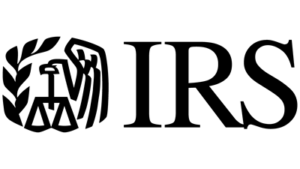Like-Kind Exchanges – Real Estate Tax Tips
Like-kind exchanges — when you exchange real property used for business or held as an investment solely for other business or investment property that is the same type or “like-kind” — have long been permitted under the Internal Revenue Code. If you make a like-kind exchange, you are not required to recognize a gain or loss under Internal Revenue Code Section 1031. If, as part of the exchange, you also receive other (not like-kind) property or money, you must recognize a gain to the extent of the other property and money received. You can’t recognize a loss.
Under the Tax Cuts and Jobs Act, Section 1031 now applies only to exchanges of real property and not to exchanges of personal or intangible property. An exchange of real property held primarily for sale still does not qualify as a like-kind exchange.
Effective January 1, 2018, exchanges of machinery, equipment, vehicles, artwork, collectibles, patents and other intellectual property and intangible business assets do not qualify for non-recognition of gain or loss as like-kind exchanges. However, certain exchanges of mutual ditch, reservoir or irrigation stock are still eligible for non-recognition of gain or loss as like-kind exchanges.
Like-Kind Property
Properties are of like kind if they’re of the same nature or character, even if they differ in grade or quality.
Real properties are of like kind, regardless of whether they’re improved or unimproved. For example, an apartment building would be like-kind to another apartment building. However, real property in the United States is not like-kind to real property outside the United States.
When multiple individuals own real property—such as when children inherit their parents’ estate or when entities like partnerships or limited liability companies (LLCs) hold the asset—problems can emerge when it comes time to sell that property.
- If all the partners in the partnership, members in the LLC, or inheriting children agree on a common form of transaction, the complexity is removed. The entity itself either sells the real estate and everyone shares in the sales proceeds, or the entity undertakes a like-kind exchange with everyone participating in the tax deferral.
- Problems arise when interests diverge. Some of the investing partners or inheriting children may want to cash out of the real estate, while others want to seek a tax deferral such as through a like-kind exchange.
- Fortunately, some common transaction structures have been developed that provide a reasonable chance of yielding a predictable tax result.
The phrases “drop and swap” or “swap and drop” describe popular structures that enable real estate owned by an entity composed of several owners to engineer a like-kind exchange for some and a cash-out sale for others.
- In brief, the partnership distributes the real property to the individuals within the entity, removing the entity-level structure and making the individuals joint tenants (the “drop”). Then partners can individually pursue the form of transaction most suitable to their interests. Some owners might sell out for cash, while others may undertake a like-kind exchange (the “swap”).
- Drop and swap transactions are grounded in the statutory requirements for like-kind exchanges.
- For there to be a valid like-kind exchange, real property held for qualified use (the relinquished property) is exchanged for other property of a like-kind that is held for a qualified use (the replacement property).
- Only real property can be exchanged. Interests in the partnership owning the property do not qualify for a like-kind exchange. Thus, the real estate needs to be distributed out of the partnership to the partners.
- For an exchange to qualify as a like-kind exchange, the investor must hold both the to-be-relinquished property and the replacement property either for productive use in a trade or business or as an investment.
Reverse Exchanges
A reverse exchange involves the investors acquiring the replacement property before the relinquished property is sold. There might be good reason for reversing the order of the transaction. The investors may want to be certain they can obtain the essential property before undertaking the large like-kind exchange.
- The IRS has made reverse exchanges easy by creating a safe harbor.
- If the investor falls within that safe harbor, tax consequences are predictable. For this to apply, the transaction requires that someone acquires the replacement property before exchanging it with the investor.
- Under the safe harbor, an exchange accommodation titleholder can acquire the replacement property and hold it until the disposition of the relinquished property.
- In a reverse exchange, the relinquished property must be identified within 45 days of transferring the replacement property, with 180 days to transfer the replacement property to the investor.
Tenants in Common Arrangements
Rather than having separate interests, an investor might want to acquire replacement property with others and contemplate acquiring an LLC interest in an entity that owns the property.
- Since the LLC is not considered real property the investor must acquire an interest in real property, not an interest in an entity that owns the real property.
- In this situation, the usual arrangement is for the investing group to enter a “tenants in common” (TIC) arrangement, with each investing person acquiring an undivided interest in the property.
Reporting a Like-Kind Exchange
Form 8824, Like-Kind Exchanges, is used to report a like-kind exchange. Instructions provide information on general rules and how to complete the form.
Reference:




Leave a Reply
You must Register or Login to post a comment.
Become a registered member, it is fast, fun, and free! Gain access to sales analysis, conversations, and much more! Texas state law requires membership before we can share sales information or talk about subjects relevant to ownership. See our membership page for more details.